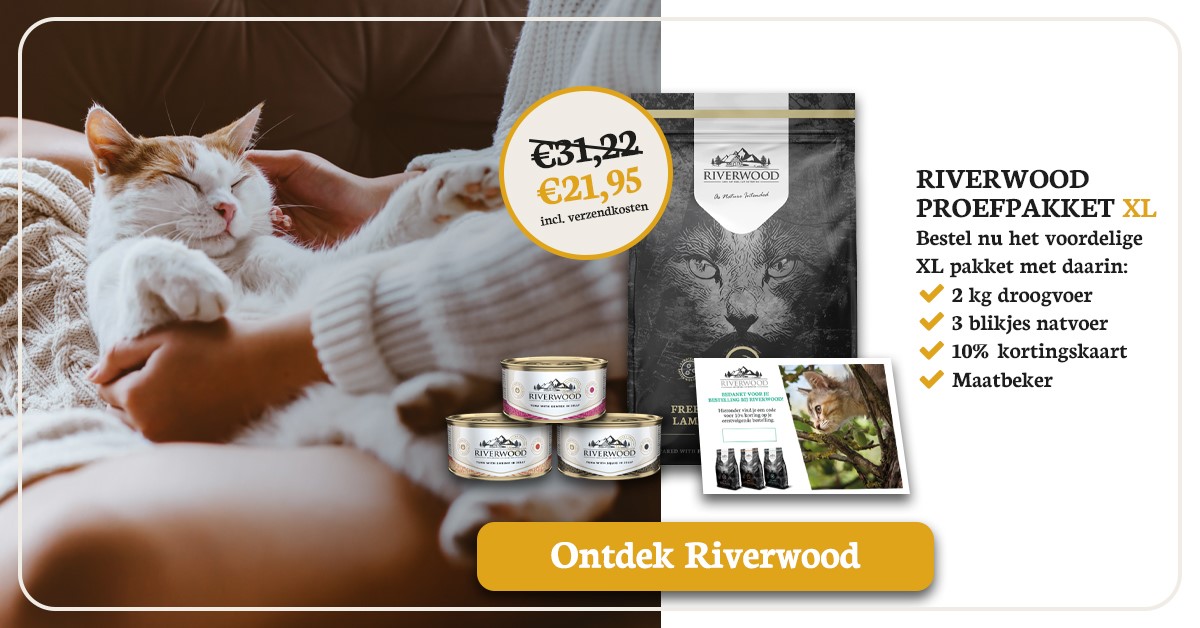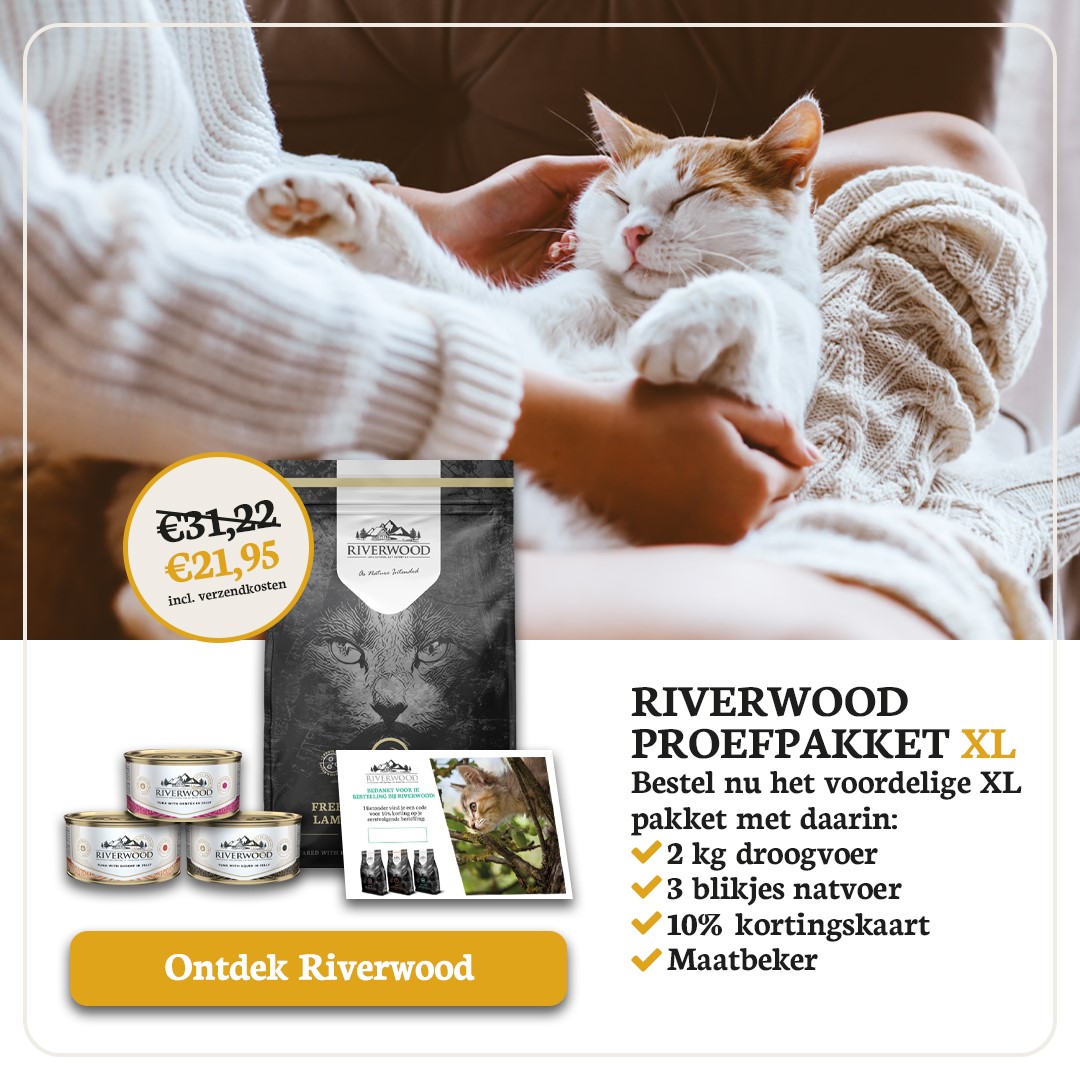Recognizing your cat's body language
Do you also always talk to your cat, but he doesn't say anything back? Then you are paying attention to the wrong signals. After all, your cat says a lot with his body! Find out in this blog what your cat has to say.

Your cat's attitude
When we look at a cat's body language, we pay attention to the position and thickness of the tail, the position of the ears, whiskers, mouth and pupils. The position of the paws can also tell a lot. To determine how your cat is feeling we always look at a combination of the tail and ears, for example. A cat's moods can be divided into a number of categories:
- Relaxed


- Scared

- Agressive

- Annoyed

- Alert

What can you see?
Position of the ears
The position of the ears can say a lot about your cat's mood, but to interpret it correctly you have to look at the combination. Also, it can vary by situation. Is your cat playing, chasing or frolicking? Then his ears usually lie back. Below we give an overall picture of the position of the ears and the corresponding state of mind.
- Anxiety is present when the ears are turned to the side and lie flat.
- Your cat is relaxed when the ears are up and forward.
- When the ears are pointed upward your cat is interested and alert.
- When the ears are turned up and sideways your cat is irritated.
- When the ears are flat against the head and turned backward, a cat is aggressive.
The whiskers
The position of the whiskers can also help you translate his body language. A relaxed cat has its whiskers in a neutral position: straight to the side from its cheeks. A frightened cat has its whiskers pointed backward and resting against its cheeks. An aggressive cat has its whiskers down and sometimes a little forward.
The tail
It is fairly easy to determine how your cat is feeling by the tail. However, you still have to look at the other factors. Looking only at the tail, we can link the following general positions to emotions:
- Tail is straight up: your cat greets an animal or human in a friendly manner.
- Tail is up with a pinched tip: your cat is greeting an animal or human it likes.
- Tail stands up trembling: your cat is very happy to see its dear master again!
- Tail goes back and forth on the floor: your cat is irritated by something.
- Tail is thick and down: your cat is afraid of something.
- Tail is thick and stands up: your cat very angry and aggressive.
- Tail is hanging down: your cat is alert or investigating something.
- Tail is swinging gracefully along the body: your cat is friendly and seeking contact.
The mouth
When we look at the mouth we can figure out three general states of mind. A relaxed cat has its mouth closed. If a cat has its mouth open the cat begins to feel restless and is a precursor to anxiety. If this happens in combination with a tongue going out for no reason, your cat is anxious and/or stressed. An anxious and aggressive cat will open its mouth wide, revealing its teeth. When aggressive, a cat will bark in the process.
They eyes and pupils
Based on the following positions of the eyes and pupils, you can translate your cat's body posture.
- Large pupils: anxious
- Narrow pupils: aggressive
- Staring: if your cat is staring at you she most probably wants something from you. Namely, she is trying to make you feel uncomfortable. The wisest thing to do is not to stare back. This is an expression of aggression.
- Winking: when your cat winks she lets you know that things are good between you. Winking back immediately creates relaxation.
Different emotions in a row
A relaxed body posture
- The ears are straight up and pointing slightly forward.
- The pupils are normal or your little house tiger gives a wink.
- The whiskers are in neutral position, pointed sideways.
- The tail lies or hangs curled behind the body.
- The mouth is closed.
A scared body posture
- The ears lie flat against the head and point to the side.
- The pupils are very large.
- The whiskers lie back against the cheeks.
- The tail is thick, hanging down and lying between the legs.
- The mouth is occasionally opened and its little tongue comes out.
An aggressive body posture
- The ears are up and to the side or lie flat to the back.
- The pupils are very narrow.
- The whiskers hang down and point slightly forward.
- The tail is straight up and thick.
- The mouth is open and the teeth are shown.
- The cat has its back arched and in this way makes itself as large as possible.
An annoyed body posture
- The ears are to the side and straight up.
- The pupils are normal and the cat can stare at you.
- The tail lies on the floor and moves from side to side.
- The mouth is closed.
An alert body posture
- The ears are pointed up and forward.
- The pupils are normal.
- The whiskers are down, but not forward.
- The tail is half up (along the length of the body).
It could also be that your house tiger is getting the wrong food. It is important to know what he/she can and cannot eat. We previously created an article on what foods a cat can and cannot eat. Check it out here and remember what to give and what not to give next time!
Lots of cats are already enjoying Riverwood every day. Would you also like your cat to feast on our delicious kibble and are you curious which variety would suit your cat best? Then answer a few questions here and order an inexpensive trial pack.




